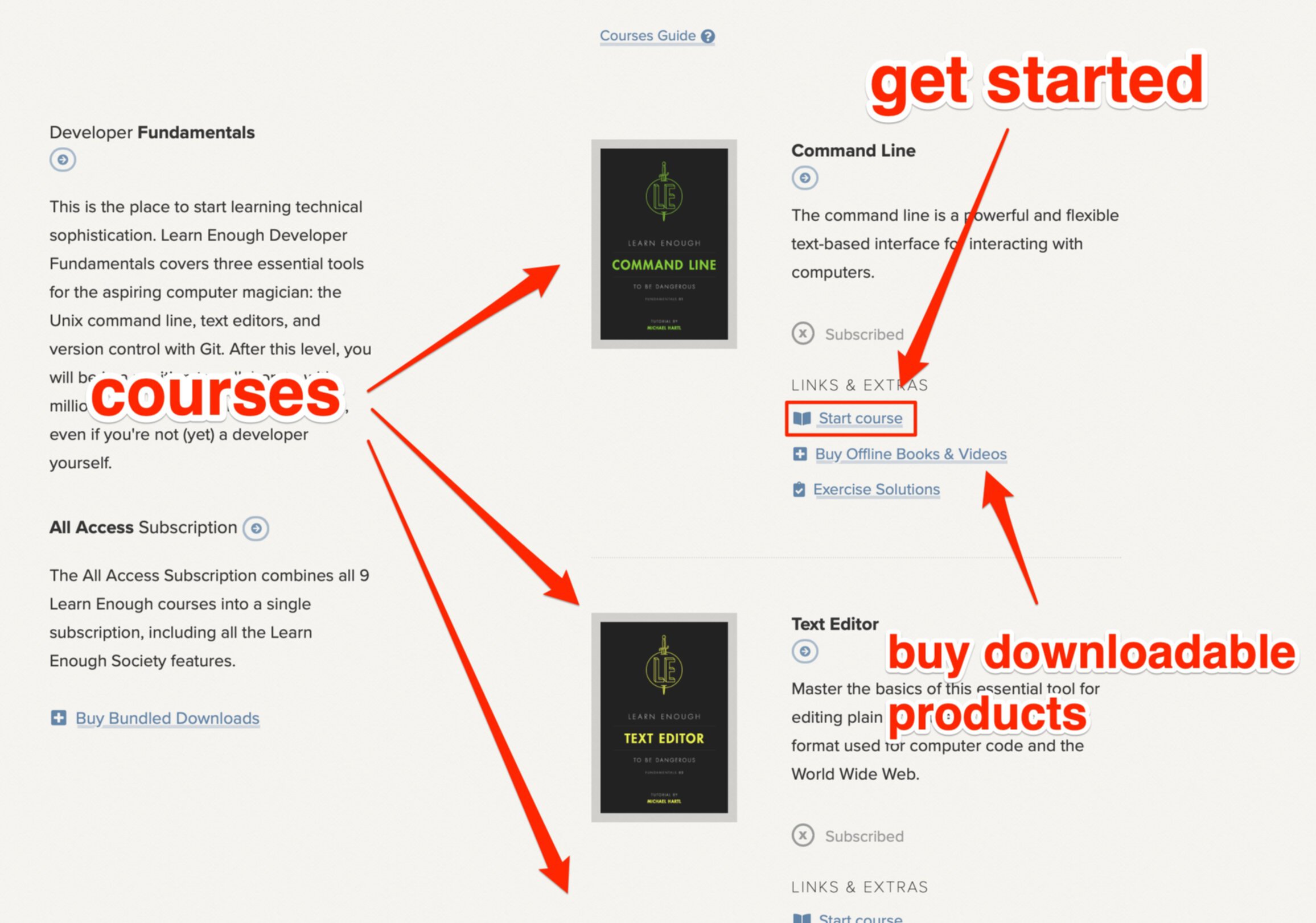
Ruby vs Python: What’s The Difference & How To Choose?
In a world where digital prowess is akin to wielding a magic wand, aspiring coders often find themselves at a crossroads: Python or Ruby?
This debate isn't just a fleeting point of conversation at nerdy dinner parties (though we love those); it's a decision that could shape an aspiring coder's trajectory.
Imagine being at wizard school and choosing between two popular and powerful wands, each unique, each with its strengths, each capable of casting its spells.
That’s precisely the problem with Python and Ruby. Both languages have their enchantments and quirks, their dedicated followers and critics.
One is hailed for its versatility, almost like a multitool in a coder’s toolkit. The other is cherished for its expressiveness, akin to a poet's favorite quill.
But which one to pick? If you're hoping for the right solution—fast, brace yourself, because the journey to that coveted decision is paved with insights, trends, and a number of my excellent jokes.
By the end of this guide, you won’t just have cold, hard facts; you’ll have an enriched perspective that might make your choice easier.
If you're still looking for a quick side-by-side video comparison, albeit one that's slightly biased, watch the following video by Malachi. Then, return to get down to the facts with our complete comparison guide.
So, buckle up, reader, as we embark on this riveting journey, navigating the strange and beautiful landscapes of Python and Ruby in 2024.

Ruby and Python in 2024
The current state of both programming languages
In the ever-evolving realm of programming, staying updated is not just a luxury; it's a necessity. With 2024 already halfway through, let's see where our two contenders, Ruby and Python, currently stand.
Python
Often lauded as the Swiss Army knife of coding languages, continues to maintain its prominence in tech.
A survey from Stack Overflow showcased the latest version of Python as one of the top 3 most loved and wanted languages by developers.
Honestly, it's not hard to see why. Thanks to its clean syntax and expansive libraries, Python has become the first love of many beginners diving into programming.
Ruby
Meanwhile, on the Ruby front, things are equally fascinating.
Ruby, particularly the Rails framework version (commonly Ruby on Rails), remains the darling of startups and businesses aiming to create something robust through rapid web development.
Ruby's philosophy, emphasizing programmer happiness and productivity, has created intuitive, readable documentation and concise source code.
While it might not dominate global surveys like Python, Ruby has carved a distinct niche. Companies like Airbnb, GitHub, and Shopify stand as testaments to Ruby's prowess in handling high-traffic and complex web apps and functionalities.
Furthermore, its dedicated community continually refines and updates the language. In 2024, a rise in microservices architecture saw Ruby gaining traction due to its suitability for creating modular and scalable applications.
While Python spreads its wings across diverse tech terrains and wins the day in terms of Machine Learning and Data Science applications, Ruby has honed its craft and still has a solid footing in computer science and web development, and I don't see this changing soon.
With their unique strengths and unwavering community support, both languages prove that they're surviving and thriving.


Both of the scripts above will produce the same output:

Popularity trends and industry insights
Popularity in terms of Ruby, Python, and other programming languages isn’t quite as trivial as popularity is in high school.
Instead, it's an indication of a language's viability, demand, value, and utility. As developers, we mostly chase the trends not for vanity but to ensure we invest our time wisely.
Python's rise to stardom
If there were a Hall of Fame for programming languages, Python would undoubtedly have its name written in bold.
Over the past decade, Python's growth trajectory has been nothing short of astronomical.
According to the TIOBE Index, Python secured a top position, reflecting its widespread adoption. And the reasons? A surge in data science, AI, and machine learning has catapulted Python to a revered status.
It's not just limited to these domains; Python's role in web development, automation, and even cybersecurity continues to grow.
Recent industry insights also reveal a surge in Python adoption within FinTech, especially in algorithmic options trading and risk assessment.
Ruby's consistent niche
On the other hand, Ruby treads a different but equally significant path. Though it might not grab headlines like Python, it remains a staple in web development circles.
The RedMonk Programming Rankings placed the latest version of Ruby comfortably among the top 20. While these rankings might seem humble next to Python, it's essential to understand Ruby's consistent appeal.
Driven primarily by the success of Ruby on Rails, this language enjoys a dedicated user base.
Many startups and SMEs opt for professional web development services or Ruby for its rapid development cycle and convention-over-configuration philosophy, which ensures a smoother and more streamlined coding experience for developers.

Syntax and code comprehension
Python's simpler, more natural language syntax
Once upon a code in programming, there came a serpent that promised to keep things simple yet powerful.
Enter Python, a language that has been winning hearts and minds mainly due to its straightforward, almost poetic syntax.
In the grand tapestry of programming languages, Python has etched a space for itself by embracing the values of simplicity.
It's a language that doesn’t speak in tongues but converses like a patient mentor and interpreter, ensuring that everyone, from the newbie coder to the seasoned developer, feels right at home.
Let's explore why Python is often likened to English and what this simplicity means for budding developers.
Readability is a virtue
Python's core philosophy prioritizes readability. The language’s founder, Guido van Rossum, aimed to make Python a language that humans, not just computers, could easily understand.
The result? A syntax that emphasizes clarity over cleverness.
For instance, Python relies on indentation (whitespace) to define code blocks, meaning nested code is easier to read without getting lost in a barrage of curly braces or semicolons.
This is often a godsend for newcomers who find other languages, like C or Java, daunting.
English-like constructs
The language's syntax is sprinkled with English-like commands that make it intuitive.
When a Python programmer writes a program: if apple is not None, even non-programmers can hazard a guess on its operator and the program's general purpose or intent.
Expressions like these significantly reduce the cognitive load of Python developers and make code more accessible to readers who might not be well-versed with Python works intricate programming jargon.

Django
This Python-powered framework exemplifies its syntax strengths.
Django, a high-level web framework, allows developers to create robust web applications with fewer lines of code.
Plus, let's face it, less code means fewer chances to mess things up.
Ruby's expressive and flexible syntax
If the Python interpreter is often compared to executable pseudocode, Ruby is more like expressive poetry.
Imagine you're crafting a complex program like you'd compose a haiku—concise yet potent. That's the joy of Ruby's syntax. It's not just about getting the job done; it's about how elegantly you can do it.

This simple snippet prints the string "Odelay!" five times. A newbie might ask, "Wait, did you just call a method on variables an integer?" Yes, we did because in Ruby, even integers are objects!
Ruby on Rails
Ruby's shining jewel is none other than Ruby on Rails. This web framework takes Ruby's expressiveness to a new level but is not just a syntax sugar fest.
Rails subscribes to convention over configuration, which saves you from the drudgery of setting up many configurations by making sensible decisions.
For example, do you want to create a new Rails app? Sure!

And just like that, you have a new Rails app with two objects, two variables, a predefined directory structure, and sensible defaults.
One of the pillars of Ruby on Rails is the DRY principle—Don't Repeat Yourself. This principle resonates throughout the framework, allowing for highly modular and maintainable code.

This line of code redirects users to their profile page while flashing a successful update notice. This one line is a far cry from writing multiple lines to accomplish the same in many other frameworks.
So, whether you're an indie developer trying to deploy your startup or a seasoned player aiming to disrupt the market, Ruby on Rails has something for you.
It's like that all-you-can-eat buffet where every dish is a delight: intricate, fulfilling, and memorable.
Performance insights for 2024
Python's execution speed and optimization capabilities
Python's performance is commendable. With advancements in just-in-time compilers and third-party debugging tools, Python's execution speed has significantly improved.
Now, I'm not ignoring the fact that Python is widely hailed as "not exactly fast", but there are more complex variables at play in the latest version. Check our Downthecrop's video to learn more.
Ruby's performance benchmarks, especially in web projects
When it comes to performance, Ruby may not necessarily win in a footrace against other languages more explicitly designed for speed, like C or Rust.
However, Ruby has carved out its niche in web development, for example, where its combination of expressiveness and robust frameworks, such as Ruby on Rails, can lead to highly performant applications.
In web-based projects, Ruby's performance is often more than adequate for most use cases. One key reason is the framework's mature ecosystem.
Ruby on Rails, for instance, is optimized for database queries, template rendering, and other standard web development tasks.

The code snippet shows how easy it is to perform a database query with Rails' Active Record. The code is clear, concise, and optimized for performance, transforming into efficient SQL queries under the hood.
Sidekiq (Ruby-based)
In more complex applications, time-consuming tasks could slow down the web application's responsiveness—like sending messages from email outreach tools, data processing, or image uploads. That's where Sidekiq comes in.
Written in Ruby, Sidekiq is a background job processor that efficiently handles asynchronous tasks.
Here's how you would define a simple Sidekiq worker to send emails:

To enqueue a job in Sidekiq, you would do something like:

By offloading these debugging tasks to Sidekiq, your web application can remain snappy and responsive to user interactions. Sidekiq uses multithreading and a message queue (usually Redis) to perform tasks in the background.
In summary, while Ruby may not be the fastest language in raw computational terms, its performance in a full virtual environment or web development environment is often more than satisfactory.
Tools like Sidekiq further augments Ruby's capabilities in a virtual environment, ensuring that even complex web applications can run efficiently and remain responsive to users.
Use cases in 2024
Ruby's niche in web projects
Ruby on Rails is a flawless framework for web app development, known for its syntax and extensive capabilities.
It is highly effective in constructing expandable web applications, whether creating a blog or an FMCG eCommerce platform.
From startups to established businesses, RoR's convention over configuration principle, promoting sensible defaults, different values, and variables, has made web application development faster and more intuitive.
GitHub as a testament to Ruby on Rails' capabilities
GitHub ensures a secure environment for all development requirements. Serving millions of developers and hosting countless repositories, GitHub's choice to use RoR underlines the framework's reliability, scalability, and speed.

If a platform as massive as GitHub entrusts RoR, it speaks volumes about its prowess in web projects.
Python's versatility: from web development to AI and data science
Python's tentacles spread far and wide, ensnaring many use cases. Its simplicity and extensive libraries make it a darling for web development.
However, its true power is unleashed in artificial intelligence and data science, where Python's efficient computation and data handling capabilities come to the fore.
Google's AI projects as a significant proponent of Python for diverse applications
Major tech behemoth, Google relies on Python for its cutting-edge AI projects.
For instance, TensorFlow is an open-source machine learning library developed by Google and written in Python, highlighting the language's capability to have programmers handle AI computations and program neural networks effectively.

Community insights and support
Python's continued dominance and demand in the developer community
2024 sees Python riding the crest of popularity among developers. Its user-friendly syntax and broad application scope make it a community favorite.
The vast number of libraries and frameworks also ensures developers have tools for almost every conceivable task.
PyPI as indicative of active Python community contributions
The Python Package Index is an expansive database and documentation, teeming with many examples of packages that cater to diverse needs, and is a clear indicator of the value of the community's active participation and the language's evolving nature.
Ruby's dedicated, albeit smaller, community
While less ubiquitous than Python, Ruby boasts a vibrant and dedicated community.
Their passion for the language ensures constant improvements, updates, and a plethora of gems (libraries) to aid development.
RubyGems as indicative of active Ruby community contributions
RubyGems, the Ruby community's package manager, hosts a multitude of gems developed by Ruby enthusiasts.
These gems, tailored to ease different aspects of coding, reflect the community's dedication to fostering innovation and aiding their peers.

Learning and career opportunities
Python's broader appeal for beginners and its relevance in education
Python's syntax is easily understandable, and its versatility for various applications and operating systems makes it an excellent choice for newcomers and educational settings.
It also offers many procedures and techniques to deal with these and operating system systems.
As a result, many educational institutions have integrated the Python interpreter program into their courses, establishing it as a programming language for the next generation of developers.
Learn Enough Python To Be Dangerous as a guided learning path for Python
The Learn Enough Python To Be Dangerous course is an option for starting your Python learning journey. It offers a guide specifically designed to meet the industry requirements for 2024.
This course will give you an excellent foundation in Python and enable you to branch out and utilize the power of Python in full.
Ruby's empowerment for developers seeking freedom in coding
With its emphasis on developer happiness, Ruby gives coders a sense of empowerment.
Its expressive syntax ensures that developers aren't just coding; they're crafting, granting them the freedom to be more creative.
Learn Enough Ruby To Be Dangerous as a guided learning path for Ruby, then on to the ROR Tutorial
Learn Enough Ruby paves the way for budding Rubyists, acquainting them with the language's nuances.
Those eager to delve deeper into web development can transition to the RoR Tutorial, enhancing their expertise in the sought-after framework.
In addition, if you need a reason to learn Ruby, you can read the Learn Enough article Why You Should Become A Ruby On Rails Developer!

Making the choice: Ruby or Python?
1. Evaluating project requirements and long-term goals
The first step in choosing between Ruby and Python hinges on project needs. While both are versatile, Python's strength in data-heavy applications contrasts Ruby's web-centric prowess.
2. Assessing the talent pool and community support
Both languages have robust communities, but Python, being more widespread, offers a larger talent pool. This could influence hiring decisions and support for larger projects.
3. Future-proofing considerations: updates, scalability, and industry demand
Considering a language's flexibility and adaptability is crucial in today's changing landscape.
Python, following example, with its extensive libraries and objects, and Ruby, for instance, focusing on the modern web, need the same object parts to offer assurances of longevity and adaptability.
In conclusion
It's evident that both languages have carved distinct yet overlapping territories. For the aspiring developer, the choice isn't binary.
It's about aligning with personal aspirations, project needs, and the thrill of the coding journey.
Whatever path you choose, Learn Enough will guide you through the terrains of Ruby and Python, ensuring a prosperous future and many intriguing coding adventures.
Frequently asked questions
How do Ruby and Python syntax differ in 2024?
Python is favored for its simpler, more natural language syntax, while Ruby is known for its expressive and flexible nature.
Which language is currently leading in web development, Ruby or Python?
Both languages are powerful for web development. Ruby is preferred for specific web applications and projects, particularly with Rails.
Is Ruby still relevant in 2024?
Ruby remains relevant for specific web projects, especially with the Rails framework. However, Python's versatility in areas like AI and data science gives it a broader appeal to build web apps.
If you want to learn more about the power of Python in building data science applications, read the article 9 Python Libraries For Data Science Mastery!
For a beginner in 2024, which language offers better career opportunities?
Python remains the top language in demand, making it a safer bet for beginners. Ruby, while powerful, has a more niche appeal in the industry.
How can I start learning Ruby or Python with Learn Enough in 2024?
Learn Enough offers courses tailored to 2024's industry demands. Dive into Learn Enough Python and explore Learn Enough Ruby to equip yourself with relevant skills.
All Access Subscription
Get free access to all 10 Learn Enough courses (including the Ruby on Rails Tutorial) for 7 days!
Free 7 Day trial details
We require a credit card for security purposes, but it will not be charged during the trial period. After 7 days, you will be enrolled automatically in the monthly All Access subscription.
BUT you can cancel any time and still get the rest of the 7 days for free!
All Learn Enough tutorials come with a 60-day 100% money-back guarantee.











